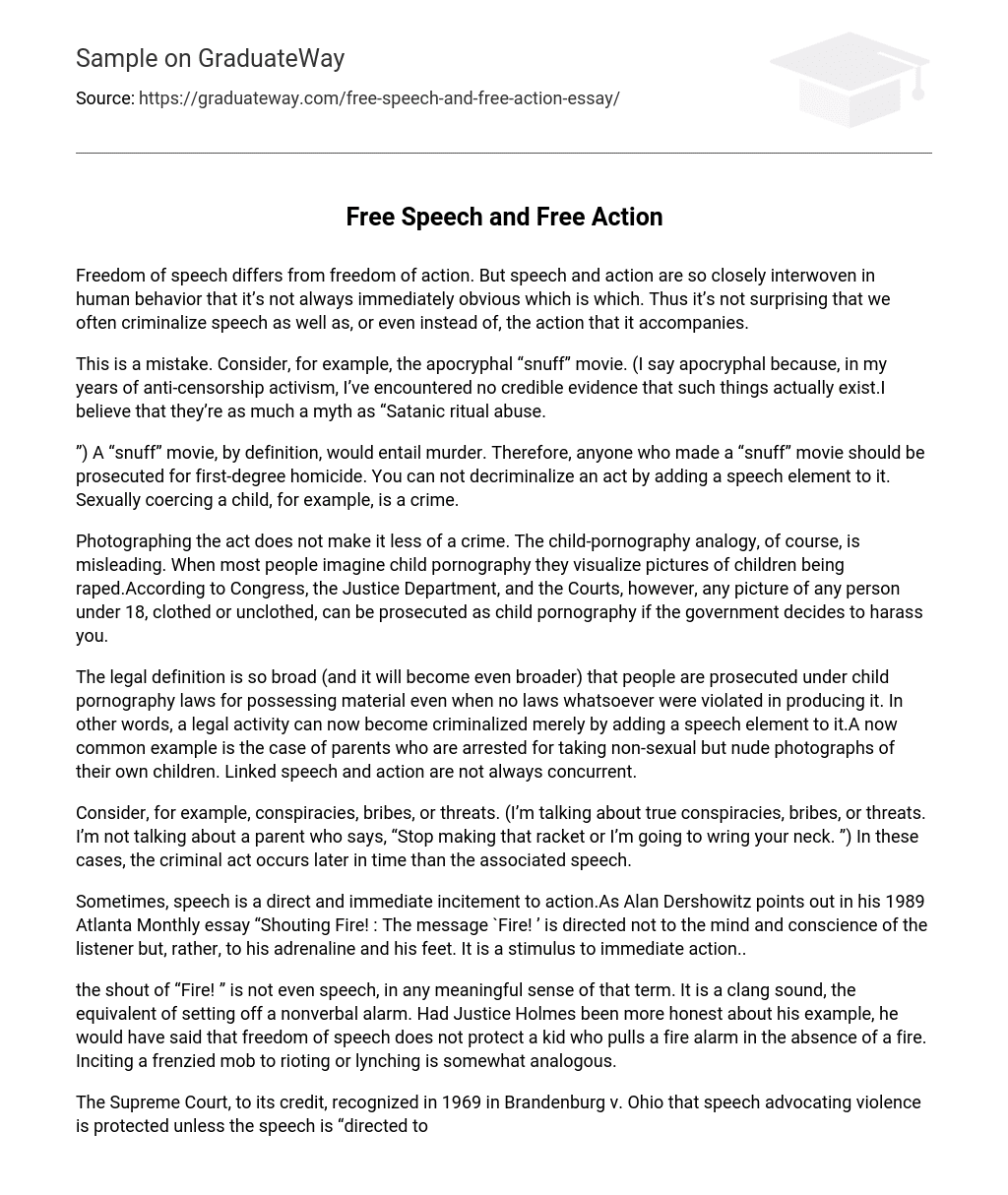The close relationship between freedom of speech and freedom of action complicates the distinction between the two. Therefore, it is not uncommon for us to perceive speech as a criminal act, either alongside or instead of the corresponding action.
Despite my years of opposing censorship, it is a mistake to believe in the existence of supposed “snuff” movies or “Satanic ritual abuse” as there is no credible evidence.
Producing a “snuff” movie, as defined, involves murder. Therefore, anyone involved in its creation should be charged with first-degree homicide. Adding speech does not justify an action’s legality. For instance, engaging in sexual coercion with a child is recognized as a criminal offense.
Although comparing photographing an act to child pornography may lead to misunderstandings, it typically brings up thoughts of children being sexually abused. However, Congress, the Justice Department, and the Courts consider any image containing a person under 18 years old, whether they are clothed or not, as child pornography within legal classifications; this can result in government harassment for individuals.
The legal definition of child pornography is being broadened, resulting in the prosecution of individuals for possessing material that may not have violated any laws during its creation. Consequently, a lawful act can now be deemed criminal by incorporating speech into it. An instance illustrating this is when parents are apprehended for capturing non-sexual yet nude images of their own children. It’s crucial to recognize that speech and action do not always occur simultaneously.
When we mention conspiracies, bribes, or threats, we are specifically addressing real occurrences of these actions. We are not discussing a parent who utters an empty threat to their child out of exasperation. In such cases, the unlawful behavior takes place subsequent to the spoken words.
Sometimes, speech can immediately incite action. Alan Dershowitz explains in his 1989 Atlanta Monthly essay “Shouting Fire!” that the message “Fire!” does not target a person’s mind and conscience, but instead their adrenaline and urge to move. It serves as an immediate stimulus for action.
The act of shouting “Fire!” does not qualify as speech in any significant sense. It is merely a loud sound, similar to activating a nonverbal alarm. If Justice Holmes had been more truthful in his example, he would have stated that the right to freedom of speech does not protect a child who falsely pulls a fire alarm. Inciting a chaotic mob to engage in rioting or lynching holds a certain level of similarity.
The Supreme Court recognized in Brandenburg v. Ohio (1969) that speech supporting violence is protected, unless it aims to incite immediate illegal actions and is likely to cause such acts. It is clear that limiting freedom of action does not violate the First Amendment. Nevertheless, there is ample opportunity for extensive debate on the interpretation of speech.
Both some conservatives and I hold the belief that images do not have First Amendment protection. However, I personally support maximizing individual freedom and interpreting speech in the broadest manner possible.





